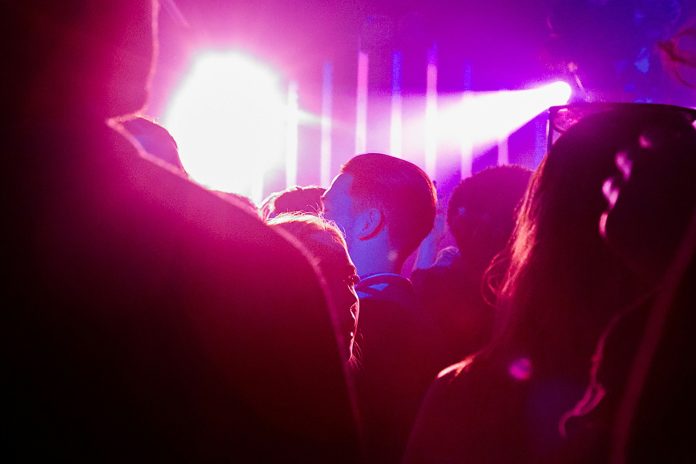Attending live events at major venues such as concerts, theater performances, and sporting events is a thrilling experience, offering audiences a chance to immerse themselves in the excitement of a shared moment. However, anyone who has attended such events knows that arriving on time isn’t always feasible. Whether due to traffic delays, work commitments, or an unforeseen circumstance, being a latecomer is a reality that most of us face at some point. This raises an important question for venue operators: how do they manage the flow of people and maintain the integrity of the event for both latecomers and those who arrive on time?
Latecomer policies at major venues have evolved over time to address the challenges posed by individuals who arrive after an event has started. These policies strike a delicate balance between accommodating late arrivals and maintaining the safety, comfort, and focus of the audience. While these policies can vary from one venue to another, the underlying goal remains the same: to create a system that ensures fairness, enhances the audience experience, and upholds the professionalism of the event.
In this essay, we will explore the significance of latecomer policies, the impact they have on the experience of both late attendees and those already seated, and how venues can refine their approach to ensure a better experience for all.
The Importance of Latecomer Policies
Latecomer policies are put in place to create a balance between the practicalities of event management and the comfort of both attendees and performers. These policies help to control the flow of people entering the venue once the event has started, preventing disruptions during key moments such as opening acts, speeches, or game starts. Major venues, whether they host concerts, theatrical performances, or sporting events, must have strategies in place that respect the experience of the audience while also addressing the logistical challenges posed by late arrivals.
The main goal of these policies is to ensure that attendees who arrive late can still experience the event without compromising the enjoyment of others. Latecomer policies can help prevent distractions, reduce overcrowding in aisles, and provide a clear set of rules for entry. Without such policies, latecomers might disrupt the performers, sports teams, or the overall ambiance of the event. The consequence of an audience member walking in late during a critical moment could create a ripple effect, from distracting the performer to causing frustration among other attendees.
The Common Approaches to Latecomer Policies
Latecomer policies can vary significantly depending on the type of event, the venue’s capacity, and the nature of the performance. However, most venues implement one of several common strategies designed to handle late arrivals.
Delayed Entry During Specific Moments: One of the most commonly used methods by major venues is to delay entry during certain parts of the event. For example, theaters, concert halls, and arenas may schedule “latecomer breaks” or designate specific times when individuals who arrive after the event has started can be allowed to enter. This approach minimizes disruption to the event by ensuring that people enter when it is less likely to disturb performers or the audience.
In a theatrical performance, late arrivals are often required to wait until a natural break in the play, such as intermission or the end of a scene. This prevents them from walking in during critical moments when a shift in focus would be disruptive.
Similarly, during concerts, audience members may be asked to wait for a suitable pause in the music or between songs before being allowed entry. This avoids awkward interruptions in the flow of the performance.
Seating Restrictions: Many venues adopt a policy where latecomers are not seated in their assigned seats immediately upon arrival but are instead directed to designated latecomer seating areas. These areas are often located toward the back of the venue or near the aisles, away from the front rows. Once the event reaches a break or pause, latecomers can then be escorted to their original seats, avoiding the disruption of walking past other attendees.
This approach is especially prevalent in theaters and orchestral venues, where the sightlines and acoustics are a vital part of the audience’s enjoyment. It ensures that late arrivals do not disturb the primary viewing or listening experience for others.
For concerts, venues might direct latecomers to a standing area at the back or along the sides, keeping them out of the direct line of sight of performers and other attendees.
Strict “No Entry” Policies: Some venues, particularly those hosting high-profile or formal performances, may impose a strict “no entry” policy once the event has begun. This policy ensures that no one enters or exits during the performance, often due to safety concerns or to maintain a level of decorum. In these cases, latecomers may be asked to wait until intermission or a scheduled break to enter the venue.
These policies are more common in venues like opera houses, ballet theaters, and high-stakes sporting events, where the atmosphere is focused on maintaining a high standard of professionalism and concentration.
In such instances, the importance of minimizing distractions is emphasized, and latecomers are made aware that entering late may result in missed sections of the event, leading to frustration for those who arrive on time.
Digital Ticketing and Alerts: With the rise of digital ticketing and technology, many venues now offer solutions to help manage latecomers before they even arrive. For instance, some venues send automated reminders about event start times, offer dynamic ticketing features that allow for rescheduling, or use technology to streamline late entry processes.
For example, attendees who are running late may be sent real-time alerts indicating the best times to arrive, so they can avoid waiting for long periods or potentially missing key parts of the event.
In some cases, digital systems can also update entry policies in real-time based on the attendance and crowd dynamics of the day, optimizing the experience for all.
The Impact on the Audience Experience
The manner in which latecomer policies are implemented can have a profound impact on both late attendees and those already seated. It’s essential for venues to strike a balance that minimizes disruption while still being accommodating to those who arrive late due to circumstances beyond their control.
For Late Attendees
Latecomers often experience a sense of stress or discomfort due to the process of being held outside or seated away from their designated spot. However, well-executed policies that allow for some flexibility and seamless entry can ease this discomfort.
Reduced Anxiety: Clear guidelines about when latecomers can enter or where they should wait reduce the anxiety that comes with being late. If the process is well-organized, individuals can feel more at ease knowing they won’t be completely excluded from the event.
Flexibility and Understanding: Providing latecomers with designated seating or a specific entry time allows them to feel included in the experience without disrupting the flow of the event. A thoughtful policy shows that the venue understands that life happens and accommodates late arrivals in a way that is respectful to everyone involved.
For On-Time Attendees
For those who have arrived on time, the primary concern is often the disruption caused by latecomers. The last thing a well-prepared audience member wants is to have their view obstructed or be distracted by someone walking in during an emotional or intense moment of the performance.
Maintaining Immersion: The key for venues is to ensure that on-time attendees can enjoy the full immersion of the event without constant distractions. Latecomer policies that emphasize quiet, unobtrusive entry are crucial for maintaining this sense of engagement.
Respect for the Atmosphere: Strict policies, such as waiting until intermission or using backdoor entry, help preserve the atmosphere of the event and show respect for both the performers and the audience who arrived on time.
The Future of Latecomer Policies
As technology continues to evolve, latecomer policies may continue to adapt to better serve the needs of both venues and attendees. Here are some potential advancements that could shape the future of these policies:
Smart Scheduling: With more events incorporating digital platforms, smart scheduling systems could dynamically adjust entry times and seating arrangements based on the flow of the crowd, allowing for a smoother experience for latecomers.
Interactive Solutions: Venues may start offering more interactive options for latecomers, such as live-streamed versions of performances or interactive apps that allow individuals to engage with the event from a distance if they miss the start.


